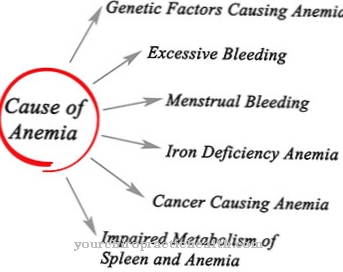An important branch of medicine is Epidemiology. It deals with the different incidence, course and spread of diseases in a population or population.
She also researches the causative factors of such diseases, whereby it is not about an individual person and his specific case of illness in order to improve it, but rather about the scientific investigation in the form of statistics of various health parameters that can simulate diseases or epidemics using mathematical models develop necessary countermeasures. Therefore, epidemiology also has options for prevention.
What is the epidemiology?

Epidemiology deals with the different incidence, course and spread of diseases in a population or population.
Epidemiology emerged as a research area around the middle of the 19th century. At this time, individual medical professionals began to investigate the causes and spread of diseases. The root of the word is derived from the Greek and means "about the people".
So z. For example, simple questions about the frequency of heart attacks in a social class or at a certain age, illnesses in chemical plants when people are at greater risk, or whether there is a link between mental health and poverty.
Here, health disorders, injuries, diseases and the causative factors of a population are dealt with in detail. The results are used to control health risks and problems, form the basis of clinical studies and also play an important role in the field of psychology and sociology. These relate to specific behavioral disorders, suicidal conditions, and autism. Epidemiology also uses physical and mental illnesses to measure relationships with the environment and the extent to which these are spread, occur in very specific sections of the population or to what extent they influence other conditions.
Statements can also be made about the rarity or frequency of a particular disease in a population, including infectious diseases and epidemics. Here research is carried out into how they arise, under what environmental influences and conditions they arise, in order to also serve health promotion in practice.
Diseases and triggers are primarily recorded and compared statistically, conditions can also be deepened with experimental and observational studies. So z. B. compared what effects stress, a certain diet, social status or environmental conditions have on a population, what diseases can develop from them and what precautionary measures must be taken.
Mathematical models are also used to record possible future epidemics or to plan necessary vaccinations. Such studies and models also allow statements to be made about populations and groups of people who have an increased risk of disease. Molecular genetic examinations are carried out, which show specific differences in susceptibility to certain diseases. These are divided into areas such as environmental medicine, childhood medicine, cancer epidemiology, pharmacoepidemiology, nutritional epidemiology or cardiovascular epidemiology.
Treatments & therapies
Important indicators are prevalence, exposure, risk and the incidence rate. The prevalence indicates the frequency of a disease. It provides information about which people or which group are confronted with a certain disease at a certain point in time and which risk factor they present.
These measurements are determined and estimated by means of samples, since complete studies of an entire population are not possible. So they represent a very specific proportion, mostly of now cases within a population. These include a. Deceased, sick, and malnourished people divided by the total number of people in that population.
"Exposure" is one of the most important terms in epidemiology. This is the disease-causing factor that is used in investigations, whether z. B.smoking as one such factor leads to lung cancer. Equally important is the question whether z. B. Eating vegetables improves health. Both factors are exposures.
Risk is the likelihood of suffering from certain medical conditions and dying over a period of time. It observes how many people died within certain years and which new diseases arose in the population. The frequency of illnesses in a person also plays a statistical role. B. is confronted with flu or runny nose.
The evidence rate provides information about the number of new cases. This is divided by the number of individuals in the population and the time period and thus gives the absolute risk. On the other hand, there is the relative risk, which represents the ratio between exposed and non-exposed persons to the risk. So z. For example, it can be determined in more detail which people at what age are exposed to an increased risk of cancer or that dementia occurs in old age, not in younger years.
Basically, epidemiology is used to research risk factors and the relationship between exposure and risk or exposure and disease.
Diagnosis & examination methods
Important studies include B. the case-control and longitudinal study. In the first case, the patients are already affected by an illness and healthy people who serve as control persons are asked about the stress and risks associated with the illness of the person concerned. These can also be very simple conditions such as passive smoking, whereby the causal connection is recorded and the increased risk of a possible disease such as B. lung cancer is defined.
In the longitudinal study, healthy people are asked about stress and risk factors. The study usually lasts for several years and takes place as an observation and questioning to find out whether people who are exposed to certain stress processes or who are exposed to a higher risk get sick more quickly and more often or even die from the circumstances. In this way it can be statistically recorded whether the conditions represent an increased health risk.












.jpg)











.jpg)


